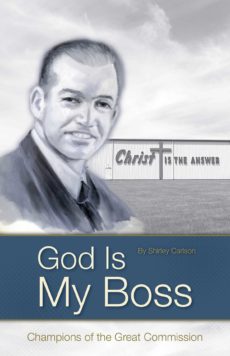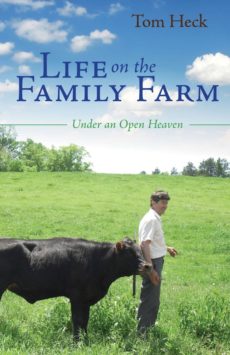My People, the Amish
Original price was: $15.99.$10.99Current price is: $10.99.
In My People, the Amish, Joe Keim paints a detailed picture of life behind the bonnets and buggies. More than a biography, this is an honest look at heart-warming traditions that mingle with the deep-rooted legalism of the Amish people.
Share this product
In My People, the Amish, Joe Keim paints a detailed picture of life behind the bonnets and buggies. More than a biography, this is an honest look at the heart-warming traditions that mingle with the deep-rooted legalism of the Amish community in Ashland, Ohio.
Born, raised, and baptized in an Old Order Amish church, from childhood Joe Keim was taught that if he didn’t follow the twenty-two-page ordinance letter that governed his community, there was no way he could get to heaven. What started as a path of rebellion led Joe and his wife Esther to a caring group of Englisher Christians who would love them like family and show them how to live out their new found faith in Jesus Christ.
Nine months after their traditional Amish wedding, Joe and Esther left family and friends forever to live openly for Christ, and endured shunning and excommunication with bold faith. Since then, the Lord has brought many former Amish people to Joe and Esther for help. Because of their passion for the Amish people and with the support of fellow believers, they have brought biblical truth to thousands of Amish through the ministry they founded in 2000, Mission to Amish People (MAP).
About the Author
Joe Keim was born and raised in Ashland, Ohio. He married Esther Keim in 1986 and they left the Old Order Amish community in 1987. They have two grown children, Jonathan and Rachel. In 2001, Joe left his job as a tool and die maker for full-time ministry. The Keims travel all over the US, speaking in churches, as well as to hospital staff, to law enforcement, and at colleges, helping people understand how to communicate with the Amish.
Through personal witness, home Bible studies, home prayer meetings, the Bible Club, The Amish Voice, and the Audio Ministry, the Keims want to see every Amish person hear the clear message of salvation. MAP offers counseling and protection to those who are victims of sexual, mental, and physical abuse. The ministry also provides help with needs such as getting a GED, obtaining a birth certificate, and finding a job. Through the Bible Club alone, they have seen more than 2,500 Amish make commitments for Christ.






6 reviews for My People, the Amish
My People, The Amish: The True Story of an Amish Father and Son by Joe Keim was a very enjoyable read for me. I received an early review copy in return for my honest opinion and I would recommend this book to those individuals who are interested in the life and culture of the Amish, the life of people working through their own journey to a relationship with Jesus Christ, and those who have struggles with their own families.
Living within a few hours of Lancaster, Pennsylvania, I found Keim’s book interesting fro the start. I have been visiting the area, “Amish Country,” since a sixth grade field trip and found the Amish fascinating to learn about and my opinions of their culture matured with me. Many people find them ‘quant,’ but the very things that promote this stereotype seem to be the beliefs and aspects of their life that people who leave the Amish struggle with – whether for religious reasons or just because they want what the English lifestyle.
Keim’s journey in My People, The Amish, as he describes his childhood, youth, and adulthood, is moving as he finds a close relationship with Jesus and starts the MAP Ministry (Mission to Amish People).
Many of Keim’s stories about his families can also be applicable for our own lives. One example is how he and his wife, Esther, relate to their own children, Jonathan and Rachel, raise them to be godly individuals, and pray over them and their families.
Another great aspect of the My People, The Amish, is the use of multiple Bible quotations throughout as Keim recounts his journey.
My only complaint is the structural organization as parts of the past, life living within the Amish community in Ohio, are told as they relate to more recent events in the life of Keim. At times it is a little confusing but not to the point that it is a huge distraction.
Keim’s message of encouragement to never give up is a wonderful one that is needed in today’s world.
I have always had an interest in the Amish culture, but haven’t had access to any real information. I’ve seen some movies, read some fictional books, and once watched an interesting documentary. This book is a different experience. It really explains the “hows” and “whys” of Amish thinking and traditions.
There is a touch of respectful humor built in. I loved the part of the book where he describes the birth of new babies into their family. The kids were told to leave the house with no explanation. Hours later, they were brought back in and introduced to their new sibling and told “An angel dropped him off” which they entirely believed.
I find the book interesting on several levels. I spent much of my life in an Independent Fundamental Baptist Church. I can relate to a lot of the issues Joe Keim faced with legalism as he watched people act in extremely unloving ways, all in the name of God. It is damaging.
I like the way his true story unfolds. It’s easy to read and holds my attention. It’s also full of some rather deep little nuggets of truth!
I’m not quite finished with the book yet, but I really like it. I’m hoping all works out well for young Joe, that he finds a real relationship with Jesus, and since I’m now reading his book . . . I think I know the happy ending! I look forward to the rest of the details in between.
My People, The Amish was an intriguing book to read because Joe Keim weaves his story of outsider culture (by this I refer to outside mainstream America culture) with Scripture lessons having to do with his ministry to the Amish. His ministry is also unique in that it differentiates between lifestyle and the Gospel. It doesn’t necessarily encourage Amish to leave, but if they choose to become “English” he helps them with the tools to do so such as drivers license, GED, and job training.
Even if one has no interest in the Amish lifestyle going into reading this biography, there are many underlying themes that apply to any type of power controlling religion. I observed some similarities in the way I have read Islam is controlling of women’s decisions by always making them agree with men’s choices at the threat of excommunication. On a more personal note, I observed multiple similarities with the way I grew up in Independent Fundamental Baptist churches. The divisions over buggy height, curtain colors, German only translation usage as well as the silence in sex within marriage and childbirth recalled many conversational and abusive situations allowed by churches in my memory.
The importance of Joe Keim’s testimony in relation to revival among multiple denominations of Christianity is so clear. On page 86 the book reads, “What I found with myself and others in the Amish community was that many times because of stringent church rules, we lived double lives.” On pages 163-168, Joe explains Old Testament law as dealing with the external and the New Testament bringing about a better covenant with God: that of the heart. He stresses man-made rules and legalism didn’t work then and doesn’t work now. He deals with this subject in relation to young adult children and parents and addresses generational conflict as well as over-control. So many Christian religions need this call to grace and mercy and step aside from the traditions and power hungry man-made rules infesting their congregations.
The beginning of the book was a little hard to read as far as timeline. Between ages 15-20, Joe ran away and returned back and forth between the Amish community and the English world that a few times I wasn’t sure what time of life this was for him as far as before salvation and after salvation. Joe also includes glowing accolades of his two children as well as he and his wife Esther’s preferred method of dating and marriage for their children. He provides outlines of questions and topics discussed, specifically in relationship to his daughter, in appendixes at the back of the book. These appeared to be in conflict with his disdain for legalism as his son’s dating life seemed to contain less oversight. I did like the verses for further Bible study and information on his free Bible study courses, also provided in appendixes at the back of the book.
I’ve always loved learning about different religions and their beliefs, but the Amish people have fascinated me. Their simple lifestyle is appealing on so many levels but I had no idea how restrictive that lifestyle could be until I read My People, the Amish.
I already knew a good deal about the Amish, or so I thought. I’d watched several shows on television about them, the most recent being Leaving Amish. But none of the shows shared much detail about everyday living and all the church ordained regulations, so I had much to learn.
As I began reading the true story of Joe Keim, My People, the Amish, I felt sorry for him. Growing up in the Old Order Amish community, Joe lived by a strict set of rules. The rules set forth by his church mandated the length of his hair, the color of his clothes, where he could go, what he could do, and how he should live his life. Joe often felt like he couldn’t live up to all the expectations set before him and rightly so. Not only did the church expect perfection, Joe’s Father did as well.
Joe shared how he longed for encouragement and affirmation from his father and how disappointed he was that he never received it. His father didn’t show any physical affection toward Joe and never offered loving sentiments to his son. This was typical of the Amish community, says Joe Keim, “I don’t remember ever getting a hug from Dad or hearing him tell me that he loved me, but that’s not uncommon in the Amish community. Most Amish people don’t show affection. It’s just the way it was. In fact, the word love isn’t in the Pennsylvania Dutch vocabulary – the closest word for love is like.” It’s no wonder, when Amish children reach teenage years and are allowed to go through the ritual of Rumspringa, they test the waters and begin to break some of their Amish rules.
Joe Keim shared every aspect of his life in My People, the Amish. He talked candidly about his childhood, his teenage years, dating, leaving the Amish community for a time, and how he finally found God. The challenges he faced involved disappointing not only his family but his church, but Joe knew there was more to a life filled with strict guidelines and tradition. He felt God drawing him and he wanted to answer the call.
After accepting Christ as his Savior, Joe wanted to give back to the Amish people whom he dearly loved. He founded a ministry called MAP, Mission to Amish People. His goal in forming this ministry with his wife, Esther, was to share the love of Christ with the Amish people and to help them understand the truth of the gospel.
I enjoyed this book. It was refreshing to read about Joe’s story and learn how difficult it is for an Amish person to completely walk away from his order. The book is filled with courage and hope. I would like to thank Aneko Press for allowing me to review this book in exchange for my honest opinion.
I thoroughly enjoyed My People, The Amish. I have always been fascinated about the Amish Culture and the dynamics of family relationships. I had moments of sorrow, joy and even frustration while reading this book. Joe Kleim was successful at conveying his emotions and desires throughout the book.
This is not a fiction Amish romance. Rather a true life story of a man’s struggles, failures and successes. His journey from what he knew (his family culture, religion, tradition) to his calling from God. Kleim was brutally honest about his doubts and concerns. It was refreshing to read a story where someone was not pretending to have it all together.
The book was easy to read, clean and had great photos included. My children are 12 & 13 and I am going to encourage them to read it also.
My only disappointment was at times I was left with the desire to have more details. Other than that, I would recommend this book.
I would like to thank Aneko Press for allowing me to review this book in exchange for my honest opinion.
As a young girl raised near the Amish and having had many curious thoughts about the culture, this book definitely brought me into some clear insights. Very often the Amish women are personified as quaint little cooks and gifted quilters. The men are viewed as skilled carpenters and laborers who could in a large group raise a barn in a days work. Amish lifestyles are painted similar to an unburdened fairytale sort of life. While this quality of character depicted holds a lot of truth there is much more behind this culture and this story brings that to light.
This book is very well written relating to life raised as a boy to married adult under the disciplines of the Amish culture, which Joe tells with accuracy in his own personal childhood experiences. The lack of understanding and inability to educate children raised in a culture that asks for acceptance without explanation can be frustrating. So often we don’t see the human aspects only the visual portrayal of a quaint lifestyle and Joe does an excellent job of explaining the difficulties of that life. There are many scripture references used to back up and understand this fascinating life testimony.
I recommend this book to all reading levels. The opinions expressed are my own and I have received a review copy from Aneko Press.